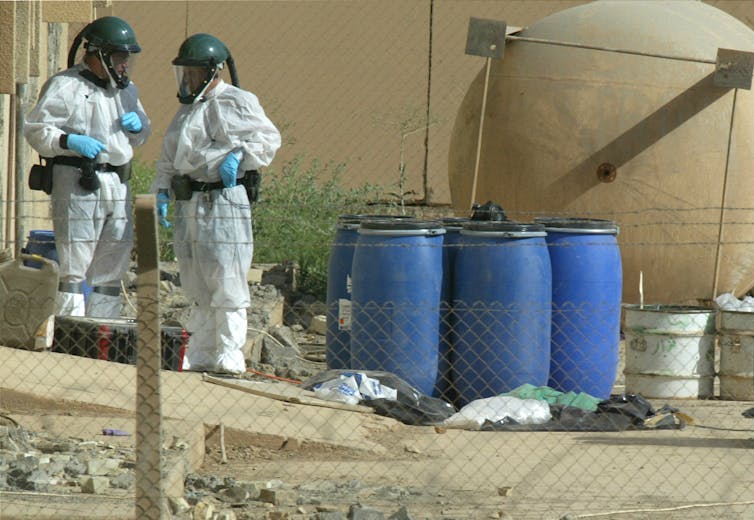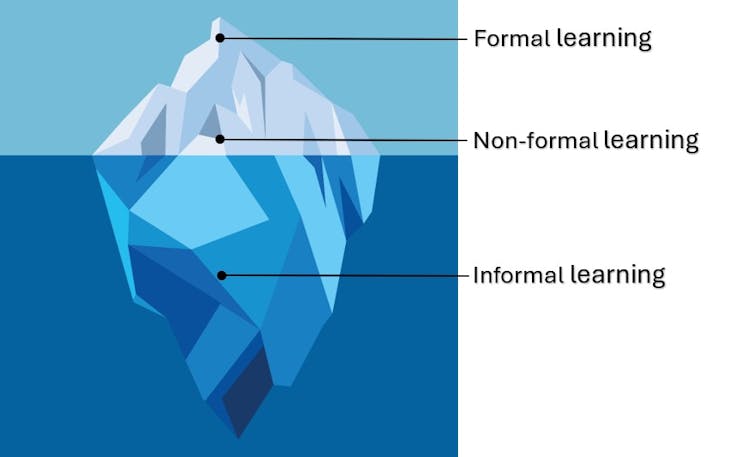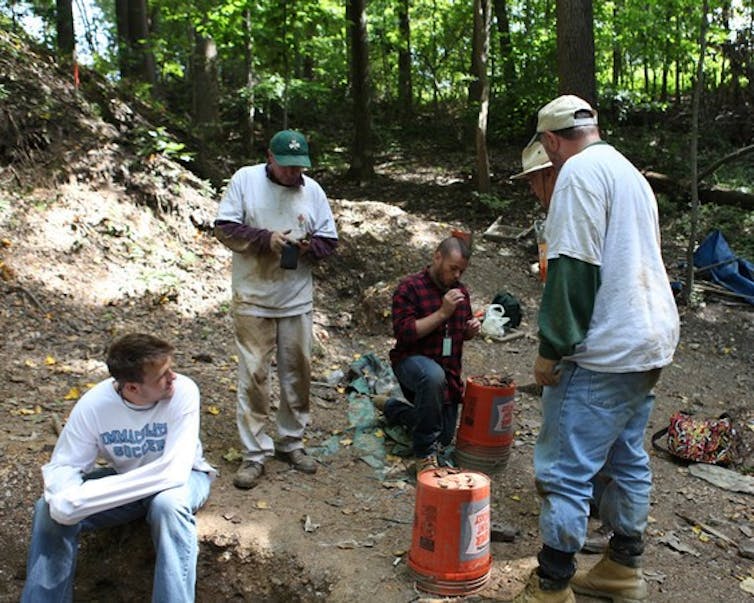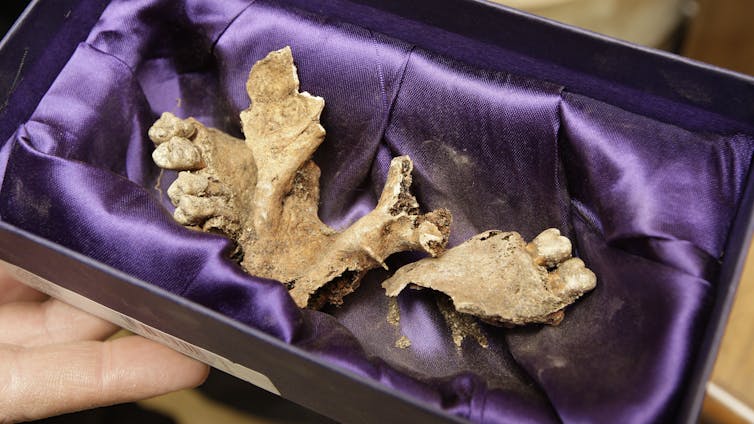Source: The Conversation – (in Spanish) – By Claudia Lorenzo Rubiera, Editora de Cultura, The Conversation

Este texto se publicó por primera vez en nuestro boletín Suplemento cultural, un resumen quincenal de la actualidad cultural y una selección de los mejores artículos de historia, literatura, cine, arte o música. Si quiere recibirlo, puede suscribirse aquí.
En una de esas ensoñaciones habituales de los seres humanos, mi pareja y yo estuvimos el otro día elucubrando con qué haríamos si tuviésemos la oportunidad de seguir cobrando nuestros sueldos actuales pero no tuviésemos que trabajar durante seis meses al año. Mi opción ganadora era la de largarnos a vivir a otro país, en otro continente, durante esa temporada. Y sé que es un sueño compartido con mucha gente: visitar un lugar al que nos apetece ir durante un tiempo extenso para poder mezclarnos con las costumbres y cultura locales.
Sin embargo, la mayoría tenemos unos días determinados de vacaciones al año y unas obligaciones que nos impiden conocer mundo de la forma en la que querríamos, así que nos limitamos a hacerlo de la forma en la que podemos. Por eso es tan interesante la pregunta que nos plantea Rafael Cejudo: ¿para qué viajamos? Es decir, a pesar de todos los problemas que genera el turismo, de los que somos conscientes y formamos parte, ¿por qué seguimos sometiéndonos a trayectos a veces incómodos, rápidos e imperfectos en espacios alejados de nuestro entorno habitual?
En esta época veraniega en el hemisferio norte, de operaciones salida y vuelos infinitos, es bueno plantearse la cuestión.
¿Quién decide qué leemos?
El dogma de la Inmaculada Concepción –que dice que la Virgen María, como madre de Jesucristo, fue concebida sin el pecado original– ha generado debates desde que se empezó a discutir allá por el Medievo.
Lo curioso es que, además de debates, provocó ríos de tinta. Literalmente. Los partidarios del dogma utilizaron todo su poder, y el poder de la imprenta, para toquetear y reescribir numerosos textos con el objetivo de que la gente no leyese la opinión de sus autores (normalmente críticos), sino la asunción (y celebración) de dicho dogma.
En su relato de este hecho, Anna Peirats remarca, de forma muy acertada, que “a menudo, lo que leemos no es lo que se escribió, sino lo que otros decidieron que debía leerse”.
De Joan (Didion) a John
Y un caso en el que precisamente sí leemos lo que se escribió, pero igual no deberíamos estar haciéndolo, es el que sobrevuela la última publicación (póstuma) de un texto de Joan Didion: Apuntes para John, que acaba de lanzarse en español.
El libro se compone de notas que Didion escribió para su marido, John Gregory Dunne, mientras ella asistía a la consulta de un psiquiatra para, entre otras cosas, intentar sobrellevar la situación de su hija Quintana, alcohólica y con problemas de salud mental.
Didion era una escritora precisa que nunca escondía su vida personal en sus textos pero que, cauta, siempre medía lo que revelaba. Entonces, ¿es ético que este libro, que recopila unos mensajes que iban dirigidos a un solo lector, y que estaba guardado en un cajón, sea de dominio público?
Ni una ni dos Españas, sino tres
El 18 de julio de 1936 comenzó en la península ibérica la guerra civil española, tras el levantamiento (que se había iniciado el día anterior en el Protectorado de Marruecos) de Franco y sus ejércitos. Lo que siguió (tres años de conflicto bélico y 36 de dictadura) es tan conocido como triste.
Y aunque no dejamos de hablar en España del poema de Antonio Machado que dice “Españolito que vienes / al mundo te guarde Dios. / Una de las dos Españas / ha de helarte el corazón”, lo cierto es que hubo un movimiento, una “tercera España”, que en los años 60 inició la reconciliación y abogó por superar las diferencias en aras del bien común del país.
Aunque no fue partícipe del evento que se describe en el artículo, una figura emblemática de esa corriente fue el periodista Manuel Chaves Nogales. Daniel Suberviola y nuestro antiguo director, Luis Felipe Torrente, dirigieron hace unos años un cortometraje documental sobre su figura, El hombre que estaba allí, que les recomiendo encarecidamente.
Tiempo de blockbuster
Hace 50 años se estrenó Tiburón, como bien se lleva contando en los medios desde hace unas semanas. La importancia de esta película de Steven Spielberg va más allá de lo cinematográfico o lo creativo. La distribución del filme –que se realizó a gran escala, de forma diferente al estreno paulatino que se seguía hasta entonces– y su rotundo éxito la convirtieron en el primer gran blockbuster del verano y en la pionera de un nuevo modelo de negocio.
Y por eso en época estival, cuando parece que el exterior llama sin cesar al ocio y la vida social, paradójicamente no dejan de estrenarse grandes artefactos cinematográficos que buscan atraer a las salas al mayor número de espectadores posible (independientemente de su calidad).
Elio, la nueva película de Pixar, es un ejemplo de ello. Codirigida por dos mujeres (que tomaron las riendas tras la marcha del primer director), nos sirve de excusa para recordar a todas esas pioneras de la animación que abrieron puertas (y ventanas, que también se necesitaba airear) y facilitaron que ahora en Disney existan proyectos encabezados por ellas.
Otra de las grandes esperanzas para la taquilla veraniega es la nueva entrega de Superman. En ella, el hombre de acero aparca su lado oscuro y vuelve a ser un ‘metahumano’ optimista y bondadoso. Como hay un Superman para cada tiempo, repasamos los orígenes del personaje y su adecuación a los tiempos que le ha tocado vivir. No en vano esta nueva encarnación no deja de insistir en el hecho de que es un alien en la Tierra y, por tanto, un inmigrante.
![]()
– ref. Suplemento cultural: con la maleta a cuestas – https://theconversation.com/suplemento-cultural-con-la-maleta-a-cuestas-262360

















